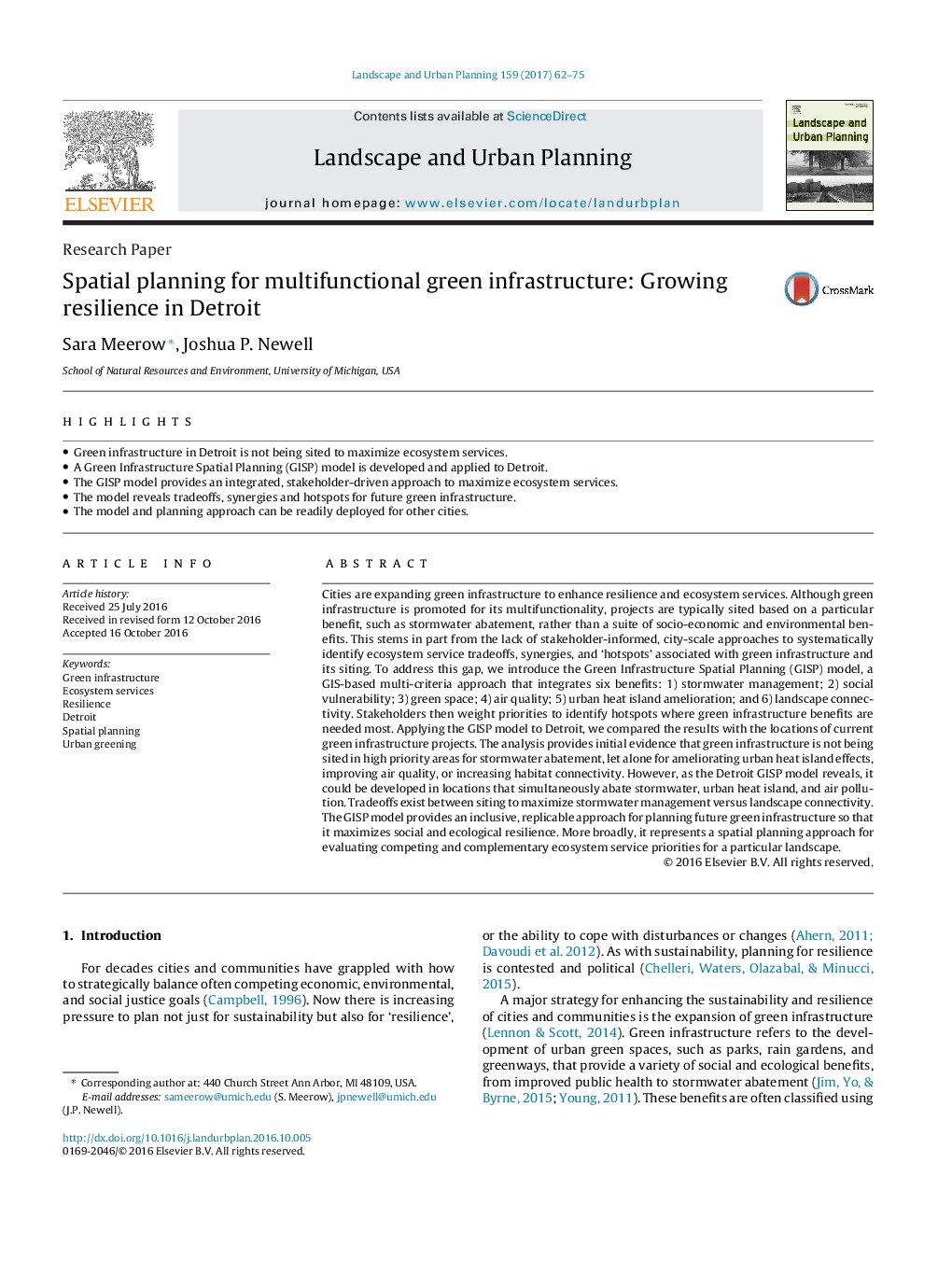| کد مقاله | کد نشریه | سال انتشار | مقاله انگلیسی | نسخه تمام متن |
|---|---|---|---|---|
| 5115180 | 1484599 | 2017 | 14 صفحه PDF | دانلود رایگان |
عنوان انگلیسی مقاله ISI
Spatial planning for multifunctional green infrastructure: Growing resilience in Detroit
ترجمه فارسی عنوان
برنامه ریزی فضایی برای زیرساخت های سبز چند منظوره: انعطاف پذیری در دیترویت
دانلود مقاله + سفارش ترجمه
دانلود مقاله ISI انگلیسی
رایگان برای ایرانیان
کلمات کلیدی
زیرساخت سبز، خدمات محیط زیستی، انعطاف پذیری، دیترویت، برنامه ریزی فضایی، سبز سازی شهری،
موضوعات مرتبط
علوم زیستی و بیوفناوری
علوم کشاورزی و بیولوژیک
بوم شناسی، تکامل، رفتار و سامانه شناسی
چکیده انگلیسی
Cities are expanding green infrastructure to enhance resilience and ecosystem services. Although green infrastructure is promoted for its multifunctionality, projects are typically sited based on a particular benefit, such as stormwater abatement, rather than a suite of socio-economic and environmental benefits. This stems in part from the lack of stakeholder-informed, city-scale approaches to systematically identify ecosystem service tradeoffs, synergies, and 'hotspots' associated with green infrastructure and its siting. To address this gap, we introduce the Green Infrastructure Spatial Planning (GISP) model, a GIS-based multi-criteria approach that integrates six benefits: 1) stormwater management; 2) social vulnerability; 3) green space; 4) air quality; 5) urban heat island amelioration; and 6) landscape connectivity. Stakeholders then weight priorities to identify hotspots where green infrastructure benefits are needed most. Applying the GISP model to Detroit, we compared the results with the locations of current green infrastructure projects. The analysis provides initial evidence that green infrastructure is not being sited in high priority areas for stormwater abatement, let alone for ameliorating urban heat island effects, improving air quality, or increasing habitat connectivity. However, as the Detroit GISP model reveals, it could be developed in locations that simultaneously abate stormwater, urban heat island, and air pollution. Tradeoffs exist between siting to maximize stormwater management versus landscape connectivity. The GISP model provides an inclusive, replicable approach for planning future green infrastructure so that it maximizes social and ecological resilience. More broadly, it represents a spatial planning approach for evaluating competing and complementary ecosystem service priorities for a particular landscape.
ناشر
Database: Elsevier - ScienceDirect (ساینس دایرکت)
Journal: Landscape and Urban Planning - Volume 159, March 2017, Pages 62-75
Journal: Landscape and Urban Planning - Volume 159, March 2017, Pages 62-75
نویسندگان
Sara Meerow, Joshua P. Newell,
